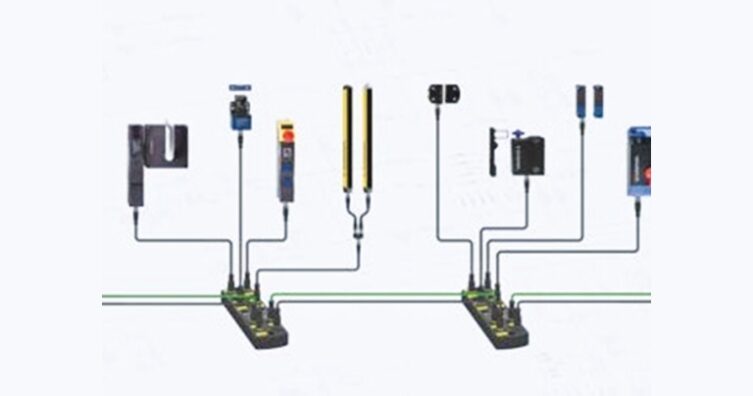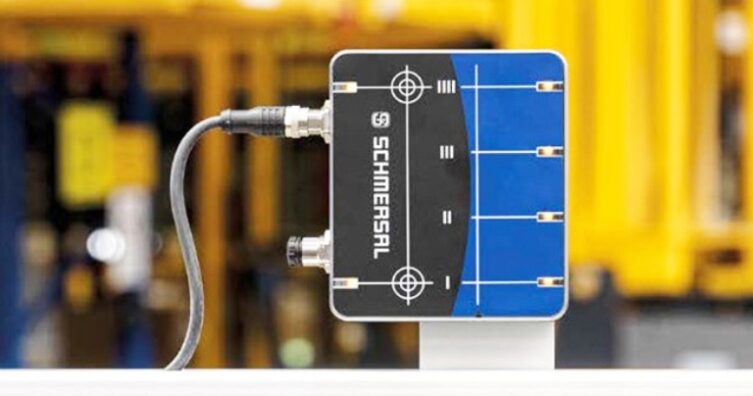There are special requirements for machinery safety, as these automated systems tend to be
extensive and have numerous interfaces with personnel, such as at transfer points.
Intralogistics is of growing importance in many industries. Due to supply bottlenecks and material shortages, new concepts for warehousing and material flows are in demand. In addition, Industry 4.0 can only be accomplished with efficient and networked logistics. There are new technical solutions and systems to help ensure a safe and productive intralogistics infrastructure. In intralogistics, the requirements for productivity and system reliability are incredibly high – customers expect ever more rapid and reliable order processing, which means that processes are increasingly being automated. On top of this, there is a high potential for danger in internal warehousing and transport. Accidents endanger employees’ health, negatively affect operational processes and give rise to high costs. When developing new automation and safety solutions for intralogistics, Schmersal always keeps two things in mind – safety and productivity.
Cost-effective and maintenance-free – the SSB-R magnet track sensor box for electric monorail conveyors One solution to improve the productivity of internal material flows is being showcased by Schmersal at Hannover Messe 2023: the SSB-R magnet track sensor box, designed to monitor the speed and position of electric monorail conveyors.
Electric monorail conveyors are used in various industries to aid the transport of workpieces and materials of varying kinds. They require no form of aisle setup, which makes them considerably more efficient and faster when compared to stationary conveyors and helps to save floor area in assembly and storage. An electric monorail conveyor system will always have multiple trolleys operating on it. In some areas, these trolleys will move at speed, while in others, they will move more slowly and stop at defined points. Consequently, speed and position monitoring for each trolley are essential. Until now, magnet sensors have been used as the solution. The new SSB-R magnet track sensor box from Schmersal now carries out these functions with significantly improved precision.
The sensor box allows up to four parallel and independent magnet tracks to be queried. It captures the magnetic field of the actuators and changes the signal status when they are passed.
This level change, which occurs even in the event of a rapid pass-by, is maintained until the next activation. If a control system is connected, it uses the signals to determine the position and route section of the sensor box. It regulates factors such as the speed (rapid pass-by or crawl speed) or stopping position of the drive motor.
The sensor box is available in four versions. The version designated SSB-RH has additional sensors on two tracks and uses a high-level signal (100 ms). These properties ensure high positioning accuracy, allowing a trolley to be brought to a stop at its desired stopping position with an accuracy of around 1.5 mm. This is particularly beneficial at robot workstations, where components must be positioned with extreme accuracy. With the second positioning track, users can define a stopping zone with careful precision, e.g., start and end positions for overtravel.
An additional benefit for productivity is magnetic signal storage, which retains signals in the event of a power failure, thereby enabling a rapid restart of operations.
The sensor box is not only a helpful aid for simplified assembly and more accurate trolley positioning when planning new systems; as the magnet switches and tracks are installed with the usual spacing of 30 mm, the box can easily replace four individual magnet switches, e.g., those of the BN325 and BN310 series from Schmersal, with a minimum assembly effort and improved positioning accuracy.
It offers flexible application options as there is a range of other conveyor systems that are supplied with energy New automation and safety solutions for intralogistics internal material flow There are special requirements for machinery safety, as these automated systems tend to be extensive and have numerous interfaces with personnel, such as at transfer points. 100 B2B PURCHASE June 2023 INDUSTRIAL SAFETY and signals via busbars, including storage and retrieval devices, floor-based skids, and shuttles on the individual levels of shuttle AKLs (AKL = automatic small parts warehouse). Using the magnet track sensor box offers the same benefits as on electric monorail conveyors on these and other systems.

Networked safety solutions
Material flows at major logistics sites, such as regional warehouses operated by food discounters or goods distribution centres operated by contract logistics providers, are largely automated. There are special requirements for the safety of machinery, as these automated systems tend to be extensive and have numerous interfaces with personnel, such as at transfer points. Networking safety switchgear can offer a solution in these situations. This means replacing the traditional individual wiring of each switchgear device with efficient, networklike wiring concepts, for which there are various options.
Palletisers handle heavy loads at high speed. To protect personnel from rapid movements, such as those performed by gantry robots, protective fences are used around the operating areas occupied by people and robots and fitted with a guard door at a minimum, the position of which needs to be monitored to ensure safety. Designers of these systems should ideally opt for a solenoid interlock, such as the AZM201 from Schmersal. This interlock keeps the guard door locked until hazardous movements and overtravel have ceased. This helps ensure interruption-free operations, as the guard door opening cannot stop palletisation. This is all the more important, considering that palletisers tend to be integrated into networked production and packaging processes.
Solenoid interlocks and many other safety components from Schmersal can be equipped with an integrated interface for the AS-i Safety at Work safety bus system for easy integration into a safety circuit. The AS-i-Safety standard facilitates rapid installation with minimal wiring effort and maximum flexibility, e.g., in the event of system modifications or new safety requirements.
Another advantage is the comprehensive range of diagnostic functions. These make for more rapid identification of the source of error in the event of irregularities or faults. This is particularly beneficial for extensive, complex systems and can help reduce downtime significantly. For these reasons, many intralogistics systems that Schmersal equips with safety systems are networked using AS-i SAW. Schmersal showcased innovations for intralogistics at HANNOVER MESSE.

Schmersal presented its latest innovations for intralogistics at Hannover Messe,
including a technology in which the position and stacking height of boxes palletised by robots on the fair trade stand is monitored by a ToF camera. ToF cameras enable efficient, real-time data evaluation, such as when carrying out measurement tasks in fill level monitoring or volume calculation of piece goods. The Time-of-Flight (ToF) procedure can be used to create a 3D image of the scene that is available as a point cloud. The scene can then be used to determine the positions and dimensions of objects. Software that can be used to define and monitor three-dimensional zones in space opens up a wide range of automation solutions in logistics and production-line production.
Connection via Safety Fieldbox
The ‘Safety Fieldbox’ (SFB) system can also be used as an alternative to the AS-Interface Safety at Work. A Safety Fieldbox enables field connection of up to eight safety switchgear devices of different types. Electromechanical and electronic terminal devices occupy just one device connection each. The safety and operational signals are captured and connected to higher-level control modules via Europe’s most commonly used bus system – PROFINET/ PROFIsafe.

New SD 4.0 bus system
If the user only wishes to capture and evaluate operational, i.e. non-safetyrelated signals, SD 4.0 offers a third option. It is the latest manifestation of a bus system developed by Schmersal to allow electronic safety sensors and solenoid interlocks to transfer comprehensive status and diagnostic data to a higher-level machine control system.
A key difference between the SD 4.0 system over previous SD bus systems is the significantly improved networking capability with higher levels. A prerequisite for this is the connection to OPC UA as a standardised protocol for M2M communication, which has the advantage of better visualisation of diagnostic information collected in the field and better access via mobile devices such as tablets and smartphones. This enables the implementation of predictive maintenance concepts.
‘Intralogistics includes complex processes and operating areas with differing potential for danger. Schmersal offers the ideal solution for every potential hazard point, whether as an individual product or a holistic system solution, all tailored to the specific application. Within this, our objective is always to raise system availability.’
Marcel Bogusch, Logistics Industry Manager, Schmersal Group.
Cookie Consent
We use cookies to personalize your experience. By continuing to visit this website you agree to our Terms & Conditions, Privacy Policy and Cookie Policy.

















